|
|
General: TROYES CATHEDRAL FRANCE CATHOLIC CHURCH GOTHIC BERNARD OF CLAIRVAUX MADELEINE
Choisir un autre rubrique de messages |
|
Réponse |
Message 1 de 33 de ce thème |
|
Troyes Cathedral
Cathedral in Aube, France / From Wikipedia, the free encyclopedia
DEAR WIKIWAND AI, LET'S KEEP IT SHORT BY SIMPLY ANSWERING THESE KEY QUESTIONS:
Can you list the top facts and stats about Troyes Cathedral?
Summarize this article for a 10 year old
SHOW ALL QUESTIONS
Troyes Cathedral (French: Cathédrale Saint-Pierre-et-Saint-Paul de Troyes) is a Catholic church, dedicated to Saint Peter and Saint Paul, located in the town of Troyes in Champagne, France. It is the episcopal seat of the Bishop of Troyes. The cathedral, in the Gothic architectural style, has been a listed monument historique since 1862.
Quick Facts Troyes Cathedral Cathédrale Saint-Pierre-et-Saint-Paul, Religion ...
Close
Earlier cathedrals
According to local church tradition, Christianity was carried to Troyes in the third century by the Bishop of Sens, Savinien, who sent Saint Potentien and Saint Sérotin to the town to establish the first church. The house where they lived is believed to have stood on the same site as the cathedral; and excavations in the 19th century found traces of Gallo-Roman building under the sanctuary. A 5th-century bishop of Troyes, Lupus was credited with saving Troyes from destruction by Huns by leading a delegation of clerics to appeal to Attila, in 451. An enamel of Lupus healing a deaf young woman is displayed in the cathedral; the old cathedral is visible in the background.
The first church was rebuilt and enlarged in the 9th century, but it was badly damaged by the Norman invasions at the end of the same century. It was rebuilt by Bishop Milo through about 980 in the Romanesque style. Fragments of the sculptural decoration of this old church were found in 1864 and are displayed in the south collateral aisle of the present church.
In the 12th century, the Romanesque church was enlarged with the addition of a bell tower and a chapel dedicated to the Virgin Mary. The church was the site of the Council of Troyes that opened on 13 January 1129, hosted by Pope Honorius II. At the urging of Saint Bernard of Clairvaux, the Council granted official status to the Order of the Knights Templar, which became immensely influential throughout Christendom.
-
An enamel of Lupus of Troyes, a 5th-century bishop, healing a deaf woman. The old Cathedral is visible in the background.
-
Gothic cathedral
In 1188 a fire destroyed much of the town, and badly damaged the cathedral. Reconstruction began in 1199 or 1200, started by Bishop Garnier de Traînel. Once the construction was underway, the Bishop departed on the Fourth Crusade in 1204, and brought back to Troyes a collection of precious relics for the cathedral treasury.
The new church was constructed in the Early Gothic style, inspired by the earlier Basilica of Saint Denis and Sens Cathedral, and by Chartres Cathedral and Notre Dame de Paris, which both were under construction at the same time. Work was well along by 1220 when the lower portions were completed and the upper walls were begun. Unfortunately, in 1228 a hurricane struck the half-finished structure, destroying the lower collateral aisle on the south side of the choir and damaging the upper walls. The upper walls were rebuilt between 1235 and 1240, and the builders took advantage of the extra time to adopt a more modern element first used at the Basilica of Saint-Denis; they filled the walls of the triforium, at the midlevel of the wall, with stained glass, bringing an abundance of light into the middle of the church.
The transept was finally vaulted in about 1310, and the spire was raised over the transept, but due to a series of economic difficulties, work slowed down. In 1365 a tornado destroyed the spire of the transept; it was not restored until 1437. More seriously, in 1389 the roof of the nave was struck by lightning, starting a fire that damaged the masonry below. This led in 1390 to the collapse of the rose window of the north transept. The rose was replaced and reinforced in 1408–9, but forty years later again showed signs of weakness. It was reinforced with a stone bar, and the portals were reinforced with new buttresses. Work resumed in 1450 under Bishop Louis Reguier, who worked to complete the upper portions of the nave.
Flamboyant and Renaissance additions (15th–17th century)
In May 1420, the Treaty of Troyes was signed in the cathedral between Henry V of England, his ally Philip of Burgundy and Queen Isabel, wife of the mad Charles VI of France whereby the throne of France would pass to Henry on the death of Charles rather than to Charles' son the Dauphin. Henry married Catherine of Valois, the French king's daughter, shortly afterwards in Troyes, either at the cathedral or the church of St Jean.
In July 1429, Joan of Arc escorted the Dauphin to Mass in the cathedral en route to proclaiming him Charles VII of France at Reims Cathedral, in contravention of the recently signed Treaty of Troyes.
At the beginning of the 16th century, a new building campaign began, this time in the late Gothic Flamboyant style. It was conducted by the master builder Martin Chambiges, whose works included the transepts of Sens Cathedral (1494), Beauvais Cathedral (1499) and Senlis Cathedral (1530). The new west front he designed followed the model of Reims Cathedral and other 13th century cathedrals, with three portals separated by strong buttresses, each topped by a high pointed arch.
The first level of the west front was finished by 1531–1432. The 12th-century bell tower and porch was demolished. The two levels were complete by 1554, and work began on the towers. Work on the north tower, called the Saint-Pierre tower, went slowly; it was not finished until 1634, and had just two of the smaller clochetons or steeples on the top corners instead of the four planned. The planned south tower was never started.
Vandalism and preservation (19th–20th century)
The cathedral suffered major damage during the French Revolution. The west front was particularly targeted; the sculptures that filled the tympanum over each portal were smashed. The lower stained glass windows in the choir were destroyed or taken apart. Fortunately, many of the upper windows were spared and still have their original glass. On January 9–10, 1794, a jeweller named Rondot led a mob that looted the treasury, seizing and melting down the previous gold and silver sacred objects.
During the rest of the 19th and 20th centuries, the cathedral underwent several campaigns of restoration. In 1840 the wall of the south transept, built on an unstable foundation, had to be reinforced to prevent it from collapsing, and between 1849 and 1866 all of the walls on the east side and then the pillars of the choir were reinforced. Many of the 13th-century windows were restored and put back into place. During both the First and Second World Wars, the stained glass was removed and put into safe storage, and the building suffered no significant harm. Restoration and repair of the west facade continued into the 21st century.
The cathedral, containing the nave, choir and apse with radiating chapels, has two principal aisles and two further subsidiary aisles. It is 114 metres (379 feet 6 inches) long and 50 metres (162 feet 6 inches) wide (across the transepts), with a height from the top of the vault of 29.5 metres (96 feet); the height of the cupola and the tower is 62.34 metres (202 feet 7 inches). The surface area of 1,500 m2 (16,000 sq. ft.),
West Front
The west front of the cathedral, with the three portals which serve as main entrances, was almost entirely redone beginning in 1507 in the Flamboyant style by master builder Martin Chambiges. It is divided into vertical sections containing the portals by four massive vertical buttresses and covered with elaborate arcades and tracery. Each of the three portals is crowned by a high pointed gable. The gable over the central portal originally held statues of the Virgin Mary, Saint John and Saint Mary Madeleine. An immense flamboyant rose window fills the space over the central portal. On top of the rose window, interrupting the balustrade, is the coat of arms of the city of Troyes
The west front suffered the most damage during the Revolution. The tympanum over the central entrance, which originally contained scenes from the Passion of Christ is bare; the statuary was smashed. The voussures and embracements that frame the portals preserve the original lavish vegetal decoration. The many niches and galleries on the west front contained statues, which were also destroyed, though the fleur-de-lis royal emblems on the balustrades remain. The sculpture of the tympanums of the north and south portals originally celebrated the lives of Saint Peter and Saint Paul, the two patron saints of the cathedral. These were also destroyed during the Revolution.
The north and only tower, finished in 1634, is built in a more classical Renaissance style. It has two narrow windows on each side, between the supporting buttresses. each side, and decoration of slender columns. The top has a balustrade with two cupolas. An arch was planned to connect the two towers, and its foundation was built, but the south tower was never constructed.
North and south sides and transepts
The north and south walls of the cathedral are supported by high flying buttresses, given additional weight by stone pinnacles. The walls are divided midway by the north and south transepts. The space between the buttresses is almost entirely filled by small chapels, lower than the central vessel of the nave and choir. A balustrade connects the roofs of the chapels, and another balustrade runs along the edge of the upper wall, at the base of the roof. The tracery of high windows and of the chapels, especially those closer to the west end of the cathedral, is flamboyant and elaborate, while the tracery toward the east end, built in the 13th and beginning of the 14th century, is simpler.
Midway along the sides are the two transepts, which protrude just beyond the chapels on either side of them. They were built in the 13th century, and each was originally decorated with sculpture in the tympanum, and in the voussures of the arches over the portals. The south portal sculpture depicted the Last Judgement and Apocalypse. The transept sculpture, like that of the west front, was destroyed during the Revolution. A few pieces are preserved in the Musée des beaux-arts de Troyes.
The north transept underwent major rebuilding. The buttresses with pinnacles were added in the 15th century, along with lancet and quadrafoil windows in the triforium, or middle level. and a balustrade with ornament representing the keys of Saint Peter. The original rose window of the transept fell in 1390, and was replaced with a Rayonnant window in the early 15th century. Later in the same century, a vertical stone bar was placed in front of the rose window to secure it.
The original south transept from the 13th century collapsed and was entirely rebuilt between 1841 and 1844. The rose window was made identical to that in the north facade, and the decoration was simplified.
|
|
|
|
Réponse |
Message 19 de 33 de ce thème |
|
Templar Nation
Popular name: Templar Nation
Continent: Europe
Capital: N/A
Language: Italian
Other languages: English, French
Area: N/A
Population: 30 000
Currency: Euro
Religion: Christian-yeoshuite
Representative (movement that represents): N/A
Contact person: N/A
Website: View Website
Email: info@gov-nt.com
In 1118, at the behest of the Cistercian Abbot of Clairvaux, Bernard of Fontaine-lès-Dijon, the Templar people was formed in the form of a lay-monastic Order and was called Pauperes Commilitones Christi Templique Salomonis.
The Templar people were born from this constitution.
The Pope's appeal during this early part of the Middle Ages was so resounding that the constitution of the Templar people was immediate.
The historically best known members of the Templar People were the famous Templar Knights, but there were numerous who served the Order.
In fact, in addition to the members of the Order, the Templar people were also composed of all the people who revolved around the Order:
squires, waiters, cooks, teachers, farriers, artisans, etc.
Moreover, all the family members of the persons indicated above also contributed to the Templars' people.
As an indication, the Templar people around 1200 had about 22,000 Knights of Arms in Europe (historical data preserved in the National Library of France in Paris).
At the time it was normal that there were thirty people following a knight in arms, so we can estimate the Templar Nation composed of about 150,000 people.
For comparison, during the same period the city of Nice, in France, had about 3,000 inhabitants.
The Templar people (knights in arms, family, servants), continued their existence until the early 1300s, to be precise until 1307, the year in which began a real attempt to exterminate by the Kingdom of France (King Philip IV) and the State of the Catholic Church (Pope Clement V).
Despite the perpetrated genocide (over 100,000 people were killed, with a population that at that time had 170,000 people), the Templar people continued its existence.
Initially, the Templars followed the Order in its movements, but over the centuries, permanent places of residence were created in the various cities called Priories, Granges, Commanderies.
Despite the various historical vicissitudes, the Templars have arrived until today, reunited in a nation, despite being dispersed in different states and with different citizenships.
In 2015 the members of the Templar Order (about 1500 people), members of other organizations that gathered a part of the Templar people and other members of the unorganized Templar people, asked the Grand Prior of V.E.O.S.P.S.S. - Pauperes Commilitones Christi Templique Salomonis to bring together the Templar people in a real nation and appointed a Council of Regency to organize the nation.
After three years of studies, evaluations and consultations (many international law experts were consulted), in 2018 the Regency Council elected a President and issued a Constitutional Charter creating, through the principle of self-determination of the peoples, the Templar Nation.
The Regency Council has also written a Constitutional Charter, which represents the constitutional basis of the Templar Nation.
The Templar Nation today is formed by the Templar people, that is, by those people who are linked by ideological principles and a common culture, by a centuries-old ancestry and, not least, by a common religiosity (the Templars are defined as Christian-yeoshuites, because faithful to the word of Jesus Christ).
From a legal point of view, under international law, the subject holder of the right to self-determination is the people as a subject distinct from the state.
The principle of self-determination of a people constitutes a norm of general international law, that is a norm that produces legal effects (rights and obligations) for the whole Community of States.
Moreover, this principle also represents a norm of “ius cogens”, that is, an imperative right: it means that it is a supreme and inalienable principle of international law, for which it cannot be derogated by an international convention.
Therefore, a people has the right to self-determination and to choose their own political regime, regardless of whether he have been subject to foreign domination.
A community of individuals (a people) who share some common characteristics such as language, history, traditions, culture, ethnicity and eventually a government, constitutes a nation, from the Latin “natio”, in english "birth", (Federico Chabod, The idea of a nation, Laterza, Bari 1961).
According to Johann Gottfried Herder in the life of a nation, the unity of culture and language comes first of political unity, of the State and of the constitution (Kulturnation).
The nation thus bases its cohesion on language, culture and tradition, not on the abstract rigidity of a political obligation.
Ernest Renan defines the nation as the soul and spiritual principle of a people, which enjoys a rich legacy of memories and current consensus.
Some authors, such as Jürgen Habermas, consider the concept of nation as a free social contract between peoples or between persons constituting a people, who recognize themselves in a common Constitution, thanks to the concept of "group of belonging".
It follows that the nation exists as long as it finds its place in the minds and hearts of its constituents.
Therefore, a nation is a community of individuals (a people), conscious of being bound by a common historical, linguistic, cultural and religious tradition.
In the case of the Templar people, this is specifically about a "nation without a state", because the people belong to different States.
The Templar Nation adheres to the "International Convention on Economic, Social and Cultural Rights" of 1966 (entered into force in 1976), to the "Universal Declaration of the Rights of Peoples", also called "Algiers Charter", dated 1976, and the "United Nations Universal Declaration of Human Rights" (UN) of 10 December 1948.
Given that the current Templar population is quite small and that over the centuries has been the object of real attempts to exterminate by several States, as well as “damnatio memoriae”, it is right to define the Templar people as a "supranational minority" to be protected.
All those who, for historical, cultural or ideological reasons, recognize themselves in the ideals of the Templars, can join the Templar Nation and obtain the Nationality.
https://www.unrepresentedunitednations.org/en/unrepresented-united-nations-directory/templar-nation |
|
|
|
Réponse |
Message 20 de 33 de ce thème |
|
"Quiso desactivar las guerras de religiones respetando la convivencia cívica"J. J. Tamayo: "El Encuentro de Francisco de Asís con el sultán Al Kamil inauguró la cultura del diálogo"
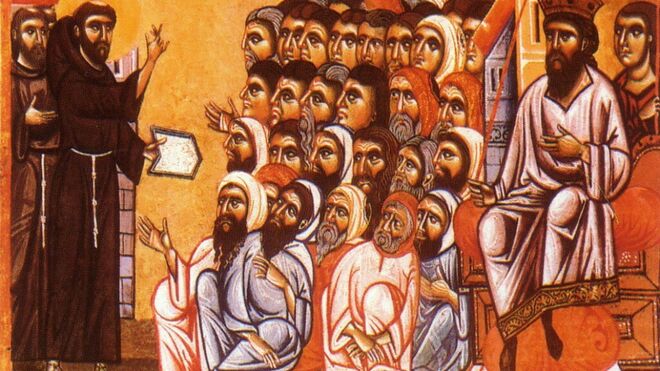
Encuentro de Francisco de Asís y el Sultán, modelo del diálogo interreligioso
https://www.religiondigital.org/vida-religiosa/Tamayo-Encuentro-Francisco-Asis-Kamil-islam-sultan_0_2163383655.html |
|
|
|
Réponse |
Message 21 de 33 de ce thème |
|
https://www.goroadachi.com/etemenanki/horus_horizon.html
Dark Horse at Hellgate
By Goro
February 1, 2014
["Blucifer" at Denver International Airport -
in city of Denver Broncos playing in 2014 Super Bowl]
After years of tracking the Trojan War/Horse/Golden Apple motif, here we are finally at the start of the Chinese Year of the Wood Horse which just commenced on Jan 31. (Trojan Horse also called "Wooden Horse".) It is essentially a Dark Horse from Hell, reflected in "Blucifer" at Denver International Airport, currently being highlighted by the Denver Broncos playing in the Super Bowl (February 2). This represents a fusion of our two major themes, Trojan War/Horse & Hellgate Activation (Contact with the Devil), the latter we officially identified as the next big thing last year (November on STRUG, December on Etemenanki).
Related Etemenanki articles:
By now even the casual observer can see this darkness rising. No need to be particularly good at pattern recognition. At this point it's meant to be noticed. Everywhere you look, you just see it...  In this update I will focus primarily on Katy Perry's "Satanic ritual" performance [video] at the Grammy Awards just several days ago, January 26...
...right during our hellgate window ( ~Jan 26-27) which we had highlighted beforehand.
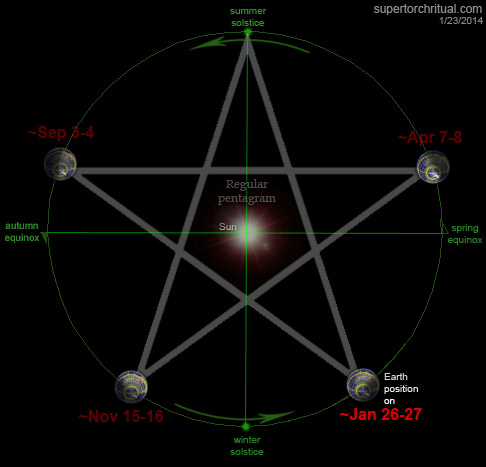
Sure, it's just Katy Perry, just a pop star. Except we've been tracking her since 2010, when we identified her as a major pentagram goddess figure...
...reflected in the big presence of The Beatles (particularly Ringo Starr) at the 2014 Grammys...
 Jan 27 Paul McCartney, Ringo Starr reunite at the Grammys
...who are also all about the (apple) pentagram (hellgate).
 
Katy Perry's occultic performance naturally caused a bit of a controversy... just as her performance did back in November (2013) at the American Music Awards, where it was all about Japan. Her "geisha" look prompted some to accuse her of racism (which is kinda of silly). But more relevant in the context of our golden-ratio time code we had projected for the Jan 26-27 window (Grammys) - which has the 2011 Japanese mega-quake/tsunami as a temporal anchor - is the fact that there were clear "tsunami" allusions during her AMA performance ( video)!


Additionally the idea of a "gate" was a strong signal there too as she performed her song "Unconditionally" in front of a traditional Japanese gate ("mon") the whole time...

...which happens to resonate with the 2014 Grammys where she performed her song "Dark Horse".
  ["Blucifer" Trojan/Wooden Horse during "Dark Horse" performance] ["Blucifer" Trojan/Wooden Horse during "Dark Horse" performance]
Aside from obviously resonating with the main theme of the season (Trojan/Wooden Horse, hellgate/devil), it's in the galactic context established in our previous articles that we are able to effectively decipher the "Dark Horse" symbolism. (All the conspiracy theorists/end times enthusiasts/sync heads feverishly talking about her "Satanic ritual" are completely oblivious to this.) In fact, the symbolism was anticipated by last year's Super Bowl... where the biggest "signal" was the semi-blackout right after the halftime show involving the Galactic Center/Dark Rift...
...which is not only a Galactic " Gate" but also a " hell-gate". We talked all about it in Solstice Hellgate Activation (Dec 25/Jan 3), linking it to the Mayan "Hell" Xibalba:
At this point we can start putting the two and two together... The Galactic Center/Dark Rift and the devil/Satan... evoking the Mayan Underworld. Because the Milky Way's "Dark Rift" - a long black streak running through a segment of the celestial river overlapping the Galactic Center - was considered by the Mayans to be a road to Xibalba, their (heavenly) Underworld or Hell. ("Xibalba" means "Place of fear".) That's the domain of the devil/Satan of course.

This is important because there is a Dark Horse right there in the Dark Rift right next to the Galactic Center... in the form of the " Dark Horse Nebula":
In other words, performing Dark Horse and doing it in a overtly "Satanic"/"Luciferic" way just days before the start of the Year of the Wood/Trojan Horse and the Super Bowl, Katy Perry (or some higher "Enki" intelligence working through her) in effect reiterated the underlying storyline of the season/year... "Opening the Hellgate".
* * *
We started (re-)focusing on Katy Perry and her song Dark Horse over at STRUG back in November (2013) which was the month that saw Super-typhoon Haiyan/Yolanda, Katy Perry's "geisha" performance at the AMA, and the perihelion of Comet ISON. In addition to the " Phoenix Storm" interpretation, we correlated the "perfect storm" Haiyan/Yolanda with Katy Perry and Dark Horse, like this:
...during [Dark Horse's] chorus, Katy utters those words:
So you wanna play with magic
Boy, you should know what you're falling for
Baby do you dare to do this
Cause I'm coming at you like a dark horse
Are you ready for, ready for
A perfect storm, perfect storm
Cause once you're mine, once you're mine
There's no going back
Needless to say, super typhoon Haiyan/Yolandawas a "perfect storm" that hit a land called "Philippines" meaning "horse-loving". This is quite surreal...
Sep 08 Taal Volcano featured in Katy Perry's music video
MANILA, Philippines - Tourism Secretary Ramon Jimenez was elated to see the Taal Volcano appearing several times in the music video of... Katy Perry's song "Roar."
Jimenez, who graced the 73rd anniversary of the Bureau of Immigration (BI) yesterday, said he was "very happy" with the positive exposure of one of the country's famous tourist attractions. [...]
As surreal as all this is, it's not entirely surprising either. Katy Perry has been a major figure in our multicontextual reality research for some years now... associated particularly with the pentagram ("hell gate").
[End quote]
* * *
So, yes, Katy Perry was multicontextually radioactive even before her "Satanic" Dark Horse ritual at the Grammys. It was thus indeed a major signal that came right on time. (Not saying she's aware of any of this herself, which is very unlikely.) In this way the underlying storyline continues to be that the "Gates of Hell" are opening and we are making Contact with the "Devil".... in 2014. What kind of "perfect storm" are we in for this year? And now we are on to the Super Bowl (Feb 2) and the Sochi Winter Olympics (Feb 7-23)... Mars has been a big piece of the puzzle too...
 "California rest in peace..." "California rest in peace..."
Big One/Birthquake... 2014/2015... in California?
Stay tuned...
|
|
|
|
Réponse |
Message 22 de 33 de ce thème |
|
https://www.goroadachi.com/etemenanki/fifth_sun.htm
Whisper of the Fifth Sun
Something Wonderful Happening...
May 05, 2009
by Goro (goroadachi.com & supertorchritual.com)

[photo source: cropcircleconnector.com]
Crop Circle
Roundway Hill, Wiltshire, England
April 29, 2009
Down the galactic rabbit hole...

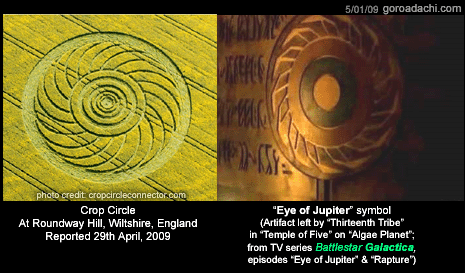
[Battlestar Galactica episodes 'Eye of Jupiter' & 'Rapture']
'Galactica' => Galactic

[Dark Horse Nebula at Ophiuchus' 'big foot']
| . |
'Eye of Jupiter' (BSG):
Religious artifact left by '13th tribe' (split from other 12 tribes) |
Ophiuchus:
So-called '13th sign of Zodiac' (split from traditional 12 signs) |
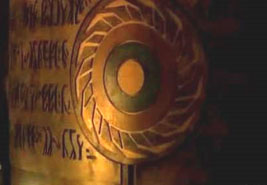 |
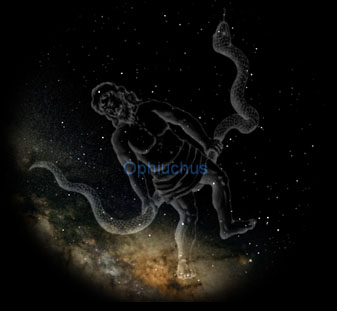 |
| Eye of Jupiter |
Ophiuchus |
| . |
* * *
Ophiuchus/Dark Horse Sequence
| Dec 14, '08: |
Sun at Ophiuchus 'big foot' (Dark Horse Nebula); major shoe/foot incident in Iraq |
| Dec 15, '08: |
Nickelback releases music video (for 1st single) & 2nd single from 'Dark Horse' album |
| April 5/6, '09: |
Italy earthquake (about 300 dead) |
| April 18/19: |
Madonna falls from horse; 21 horses die in Florida before polo match |
| April 29: |
'Eye of Jupiter' Galactic crop circle |
| May 02: |
Dark horse wins Kentucky Derby |
December 14, 2008
Sun at Ophiuchus 'big foot' & major shoe/foot incident in Iraq
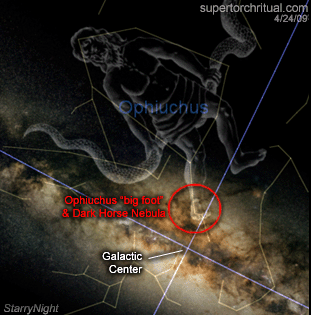
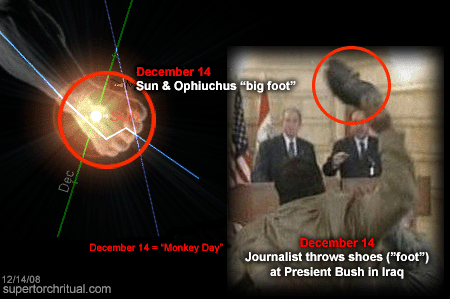

Dec 14 Shoes thrown at Bush on Iraq trip
Dec 14 Angry Iraqi throws shoes at Bush in Baghdad
Next day...
December 15, 2008
Nickelback releases music video for 1st single
'Gotta Be Somebody' (& 2nd single 'Something in Your Mouth') from their 'Dark Horse' album

'Gotta Be Somebody' music video 'predicting'
earthquake in Italy/Rome...

Italy = Big foot/leg/boot country

April 5-6, 2009
Italy (L'Aquila) earthquake near Rome (~300 dead)
 
'Gotta Be Somebody' crossing over into reality
Time mirroring via Venus (Amor/Roma)
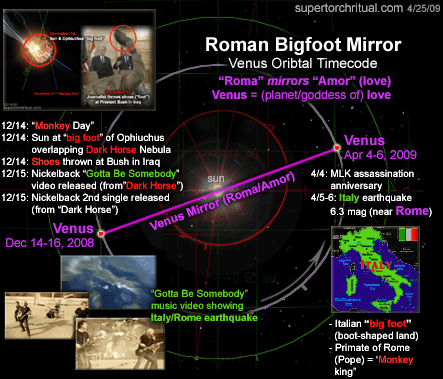

Ground zero = L'Aquila

In Roman mythology Aquila is Jupiter's companion eagle
...flying in Milky Way Galaxy

...which is 'Eye of Jupiter'


2 weeks later...
April 18-19, 2009
Dark horse omens
Apr 18 Madonna injured in horse tumble
Apr 19 21 polo horses mysteriously dead in Florida
etc.

10 days later...
April 29, 2009
'Eye of Jupiter/Dark Horse' crop circle
 

3 days later...
May 02, 2009
'Dark horse' wins Kentucky Derby

May 02 From worst to 1st: 50-1 shot shocks Derby field
dark horse - noun: a racehorse, competitor, etc., about whom little is known or who unexpectedly wins.
* * *
Mayan Prophecy
2012

'End' of Mayan calendar/age...
 
...popularly associated with 'Galactic Alignment'
(winter solstice at Galactic Equator)

(1998) |
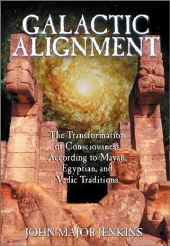
(2002) |

In reality alignment most precise around May 1998
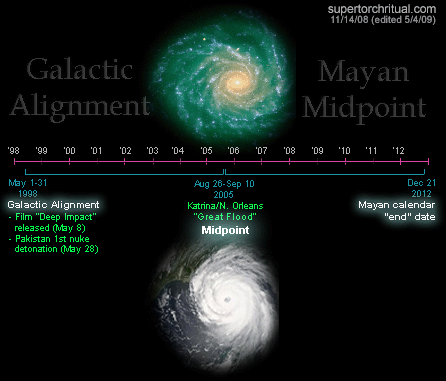
...producing Midpoint around end of August 2005
Hurricane Katrina/New Orleans
'Great Flood' (Deep Impact)

As above, so below...
Milky Way Galaxy = (traditionally) celestial great flood
Then...

Quarter point in April 2009
Early April:
'Galactic' quake disaster in Italy/Aquila
 

Late April 2009:
- Swine flu outbreak starting in Mexico or land of Maya
- Eye of Jupiter'/Galactic crop circle (Apr 29)

* * *
2010


'Eye of Jupiter' = supernova (exploding star)
in Battlestar Galactica 'Rapture'

[Eye of Jupiter nova - video clip]
Echoing...
Jupiter exploding into star in 2010: The Year We Make Contact

| Video clip - '2010' Jupiter explosion |
| |
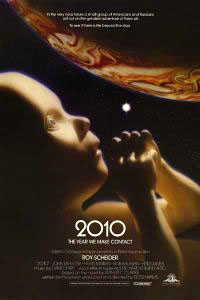
- Jupiter is fifth planet from Sun
- We are at end of Mayan 'Fifth Sun' (world age)

2010 Winter Olympic Games
in Vancouver, Canada
...featuring 'Bigfoot' mascot
 
Interacting with Dark Horse...
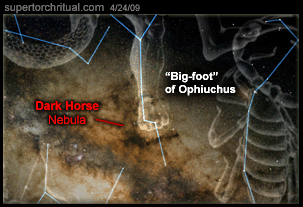
...of Nickelback

...who are Canadian band based in Vancouver
...where Olympics will starts on February 12th

...mirroring St. Anthony Day Bigfoot press conference (Aug 15)
Let the Games Begin.
.
APPENDIX
The Foresight Files
Key patterns accurately projected beforehand (including Ophiuchus 'big foot'/Iraq shoes, Italy earthquake/Nickelback, , Kentucky Derby, etc.)
T-minus 37 days...
|
Major quake? Death of the Pope/Primate? ... Remember Nickelback's latest music video? ... Earthquake in Rome...
... all the indications are that something big is coming around late March. A straightforward interpretation would be that it's going to involve Italy/Rome/Pope (death?), major earthquake, war, and/or such things.
[excerpt from February 28, 2009 post]
|
[Appendix CONTINUED...]
|
|
|
|
Réponse |
Message 23 de 33 de ce thème |
|
|
|
|
Réponse |
Message 24 de 33 de ce thème |
|
|
|
|
Réponse |
Message 25 de 33 de ce thème |
|
|
|
|
Réponse |
Message 26 de 33 de ce thème |
|
Troyes (French pronunciation: [tʁwa] ⓘ) is a commune and the capital of the department of Aube in the Grand Est region of north-central France. It is located on the Seine river about 140 km (87 mi) south-east of Paris. Troyes is situated within the Champagne wine region and is near the Orient Forest Regional Natural Park.
Troyes had a population of 61,996 inhabitants in 2018. It is the center of the Communauté d'agglomération Troyes Champagne Métropole, which was home to 170,145 inhabitants.
Troyes developed as early as the Roman era, when it was known as Augustobona Tricassium. It stood at the hub of numerous highways, primarily the Via Agrippa. The city has a rich historical past, from the Tricasses tribe to the liberation of the city on 25 August 1944 during the Second World War, including the Battle of the Catalaunian Plains, the Council of Troyes, the marriage of Henry V and Catherine of France, and the Champagne fairs to which merchants came from all over Christendom. The city has a rich architectural and urban heritage: many buildings are protected as historical monuments, including the half-timbered houses (mainly of the 16th century) that survived in the old town. They have contributed to Troyes being designated as a City of Art and History.
Manufacturing of textiles, developed from the 18th century onwards, was a chief part of Troyes' economy until the 1960s. Today, Troyes is the European capital of factory outlets and trading, and has three brand centers.
Prehistoric evidence found in the Troyes area suggests that the settlement may have developed as early as 600 BC. Celtic grave-mounds have been found near the city, and Celtic artifacts have been excavated within the city grounds.[3]
In the Roman era, Troyes was known as Augustobona Tricassium. Numerous highways intersected here, primarily the Via Agrippa, which led north to Reims and south to Langres, and eventually to Milan.[4] Other Roman routes from Troyes led to Poitiers, Autun and Orléans.[5]
It was the civitas of the Tricasses people,[6] whom Augustus separated from the Senones. Of the Gallo-Roman city of the early Roman Empire, some scattered remains have been found, but no public monuments, other than traces of an aqueduct. By the late Empire the settlement had reduced in extent. It was referred to as Tricassium or Tricassae, the origin of French Troyes.
From the fourth century AD, the people had become Christian and the Church made the city the seat of a bishop. The legend of its bishop Lupus (Loup), who allegedly saved the city from Attila in 451 by offering himself as hostage, is hagiographic rather than historical.[7] A disciple of Saint Lupus, Aventinus (Saint Aventin of Troyes, died 537) founded a monastery at Troyes.[8] It was several centuries before Troyes gained importance as a medieval centre of commerce.
The Battle of the Catalaunian Plains, also called the Battle of Troyes, took place nearby in 451 AD: the Roman general Flavius Aetius and the Visigothic king Theodoric I fought against Attila.
The early cathedral occupied the site of the current one. Here Louis the Stammerer in 878 received the crown of West Francia from Pope John VIII. At the end of the ninth century, following depredations of the city by Normans, the counts of Champagne chose Troyes as their capital. It remained the capital of the Province of Champagne until the Revolution of the late eighteenth century. The Abbey of Saint-Loup developed a renowned library and scriptorium.
During the Middle Ages, Troyes functioned as an important international trading town. It was the namesake of troy weight for gold - a standard of measurement developed here.[9] The Champagne cloth fairs and the revival of long-distance trade, together with new extension of coinage and credit, were the drivers of the medieval economy of Troyes.
In 1040, Shlomo Yitzchaki, better known as Rashi, was born in Troyes. The rabbi and philosopher, a prominent commentator on the Bible and the Talmud, established an influential school of Jewish thought in the city.
In 1285, when King Philip the Fair united Champagne to the French royal domain, the town kept a number of its traditional privileges. John the Fearless, Duke of Burgundy and ally of the English during the Hundred Years War, in 1417 worked to have Troyes designated as the capital of France. He came to an understanding with Isabeau of Bavaria, wife of King Charles VI of France, for the establishment at Troyes of a court, council, and parlement with comptroller's offices.
On 21 May 1420, the Treaty of Troyes was signed in this city, still under control of the Burgundians, by which King Henry V of England was betrothed to Catherine, daughter of Charles VI. Under the terms of the treaty, Henry V, rather than the Dauphin, was to succeed Charles as King of France. The high-water mark of Plantagenet hegemony in France was reversed in 1429 when the Dauphin (afterwards King Charles VII) and Joan of Arc re-established French control of the town of Troyes by armed conflict (Siege of Troyes).
 The Hôtel de Ville The Hôtel de Ville
The great fire of 1524 destroyed much of the medieval city, although the city had numerous canals separating sections.
During the repression of January and February 1894, the police conducted raids targeting the anarchists living there, without much success.[10][11][12]
 Cathédrale Saint-Pierre-et-Saint-Paul de Troyes (1549) Cathédrale Saint-Pierre-et-Saint-Paul de Troyes (1549)
- Many half-timbered houses (mainly of the 16th century) survive in the old town.
- Hôtels particuliers (mansions) of the old town
- The Hôtel de Ville on Place Alexandre Israël, is an urbane example of the style Louis XIII. On the central corps de logis, which contains the main reception rooms, its cornice is rhythmically broken forward over paired Corinthian columns; these are supported below by strong clustered pilasters. Above the entrance door the statue of Louis XIV was pulled out of its niche and smashed in 1793, during the Reign of Terror at the height of the French Revolution; it was replaced in the nineteenth century with the present Helmeted Minerva and the device in its original form. It is now rare to see "Liberté, Egalité, Fraternité, ou la Mort". In the Salle du Conseil (Council Chamber) a marble medallion of Louis XIV (1690) by François Girardon, born at Troyes, survived the destruction unscathed.[13]
- Museum of Modern Art (Musée d'Art Moderne)
- Maison de l'outil et de la pensée ouvrière
- Vauluisant Museum :
- Historical museum of Troyes and Champagne-Ardenne
- Museum of hosiery
- Hôtel-Dieu-Lecomte apothecary
- Saint-Loup Museum (museum of fine arts)
- Di Marco Museum (Open from 1 April to 1 October, each year)
Churches and synagogues
[edit]
 Cathedral western front Cathedral western front
Not having suffered from the last wars, Troyes has a high density of old religious buildings grouped close to the city centre. They include:
- Saint-Pierre-et-Saint-Paul Cathedral
- Saint-Nizier Church, in Gothic and Renaissance style, with remarkable sculptures. Classified as a Monument Historique (French equivalence) in 1840.
- The Gothic Saint-Urbain Basilica (thirteenth century), with a roofing covered by polished tiles. It was built by Jacques Pantaléon, who was elected pope in 1261, under the name of Urbain IV, on grounds where his father had a workshop. Classified Monument Historique in 1840. It was proclaimed a basilica in 1964.
- Sainte-Madeleine Church. Very early Gothic, with east end rebuilt around 1500. Remarkably elaborate stone rood screen of 1508–17 in Flamboyant Gothic style, sculpted by Jean Gailde, with a statue of Saint Martha. Fine Renaissance stained glass. Saint Jean district. Classified Monument historique in 1840.
- Saint-Jean Church, with a Renaissance chancel, tabernacle of the high altar by Giraudon. On the portal, coat of arms of Charles IX. Classified Monument Historique in 1840.
- Gothic Saint-Nicolas Church, dating to the beginning of the sixteenth century, with a calvary chapel -shaped rostrum reached by a monumental staircase. On the south portal, two sculptures by François Gentil of David and Isaiah.
- Saint-Pantaléon Church, with extensive statuary from the sixteenth century.
- Saint Remy Church, with a 14th-century spire rising to a height of 60 m (196.85 ft). A 17th-century sundial on its south side bears the Latin inscription sicut umbra dies nostri super terram ("our days on earth pass like a shadow").
- Church of Saint-Martin-ès-Vignes. It has stained glass windows of the seventeenth century by the local master verrier Linard Gonthier.
Several Troyes churches have sculpture by The Maître de Chaource.
 The Rashi Synagogue The Rashi Synagogue
Jewish worship is conducted in the Rashi Synagogue of Troyes, named in honor of Rabbi Salomon Ben Isaac, known as Rashi, the famous commentator of the Talmud. The current building was constructed on the site of an old abbey from the 16th century and replaced the synagogue destroyed during World War II[14] · .[15] The building is in Renaissance style and was restored in the 20th century. It consists of a half-timbered house from the 16th century and another house dating from the 18th century (Louis XV style).[16] A cultural center has also been established.[17]
Recent renovations were undertaken to restore the synagogue to reflect the spirit of Rashi of Troyes' time. The inauguration took place on 4 September 2016, in the presence of Haim Korsia, the Chief Rabbi of France.[18]
|
|
|
|
Réponse |
Message 27 de 33 de ce thème |
|
|
|
|
Réponse |
Message 28 de 33 de ce thème |
|
While the original sculpture at Troyes has largely disappeared, the cathedral still has a large number of its original stained glass windows, installed from the 13th to 16th century, along with some windows incorporating sections of medieval glass, for a total of 1,600 square meters of stained glass. The windows illustrate vividly the evolution of stained glass in France, from the 13th-century windows, with their deeply-colored, thicker pieces of glass assembled like mosaics, to the 15th- and 16th-century windows, using silver stain and enamel painting to create the effects of shading and perspective similar to those of Renaissance painting.
-
The Apostles - Lower windows of the nave, (south side Bay 51) (14th century)
-
Saint Peter (south side-Bay 47) (14th century)
-
The Annunciation (south side Bay 47) (14th century)
-
Apostles - Upper windows of nave (Bay 51)
-
Sainte Catherine of Alexandria and Saint Maurice of Agaune (16th c.)
-
The Mystical Wine Press - Bay 49 (1625)
The nave has glass from a wide variety of periods and styles – sometimes in the same bay. Some of the oldest windows, from the end of the 13th and beginning of the 14th century, are in the lateral chapels. Most of these underwent considerable restoration in the 19th century.
Other bays were given new windows in the 16th and 17th centuries. Of these, some were designed by Linard Gontier, a prominent Troyes artist of the Renaissance. His most famous window in the cathedral is the "Mystical Wine Press", inspired by the prominence of the champagne from the region. It depicts Christ with grapevines sprouting from this chest, and a variety of scenes associating grapes and wine with the apostles.
Choir and ambulatory
[edit]
-
Windows of the axis chapel of the apse, dedicated to the Virgin Mary (13th–19th c.)
-
The Flight to Egypt and Adoration of the Magi (13th century)
-
Musician in the Tree of Jesse window, 13th c. Chapel of Joan of Arc, (Bay 31)
-
Detail of 15th-century window (Bay 38)
-
King Philip II of France (Choir, Bay 52)
-
Powers of the Ecclesiastical hierarchy (Bishops and Kings) (Bay 52)
-
Upper windows of the choir (Bay 208); Parable of the Wise and Foolish Virgins
The choir and the ambulatory, to the east of the cathedral, still have much of their original stained glass. The oldest windows are in the radiating chapels on the east, some dating to 1200–1230. The higher windows and those of the triforium date to about 1235–40. Some of these windows are more recent, but include portions of the older original glass, which had not yet been installed at the time of the hurricane of 1228. While many of the lower windows were considerably modified, the upper windows of the choir are mostly in their original state.
The transept windows have a mixture of styles. The windows on the west are from the 14th century, while those on the east were replaced in the 16th century with windows with tracery of the Flamboyant Gothic style. The triforium windows on the west were made in the 19th century, while the triforium windows on the east include vestiges of restored 13th-century glass.
-
The west rose window (partly hidden by organ)
-
Rose window of the north transept
-
Detail of the north rose window
The rose window at the west end of the nave, from 1239, was made by the artist Jean Soudain on the theme of the celestial court. The view of this window from the ground floor is largely obscured by the organ.
The rose window in the north transept, ten meters in diameter, was installed in the 15th century to replace the earlier window, which fell in 1340. It is in the Rayonnant Gothic style, with its tracery radiating outward from the center. The rose window on the south transept is a copy of the north window.
The grand organ is located on a tribune over the portal on the reverse side of the west front. It was originally built in 1730 for Clairvaux Abbey in Burgundy. When the abbey was closed in 1793 during the Revolution, the organ was nationalised and sold at auction. It was purchased by the overseers of Troyes Cathedral, but was not put into place until 1808. It replaced the original Troyes organ, built in the 15th century and placed next to the choir. That organ had been destroyed in 1792. The installation of the new organ was controversial because it largely blocked the view of the west rose window from the nave and choir.[24]
The organ has fifty-five jeux or sounds, played with four keyboards and a set of pedals. The instrument was classified as an historical monument in 1963, and the case in 1974.[25] The organ is decorated with statues of angels and atlantes.
The cathedral has a second, smaller organ, which is located in the choir. This instrument was built in 1865 and was restored in 1987. It has thirteen jeux, played with two keyboards and a set of pedals.
Troyes Cathedral has four bourdons, heavy bells which made a deep note, for tolling on solemn occasions. Each has a name, and all were made in the early 19th century, replacing the early bells taken out and melted down during the French Revolution.
- Petrus Carolus - (4500 kilos, made in 1827)
- Paulus Ana - (3,269 kilos, made in 1813)
- Savinianus - (2,437 kilos, made in 1813)
- Marie - (2000 kilos, made in 1827)
-
The Coffret of Troyes (Ivory, 11th century)
-
The Stuart Cross, made of crystal
-
Reliquary of Saint Bernard of Clairvaux, with silver, copper and enamel (12th century)
The treasury of the cathedral was constructed at the beginning of the 13th century within the choir, next to the apse. It was particularly designed to display the collection of sacred relics which the Bishop Garnier de Traînel had brought back to France from the Fourth Crusade. Some of the relics and other valuable objects were used as ransom for the captive King Francois I in 1525, and others were lost during the Revolution, but the collection was gradually rebuilt. It has a particularly large collection of medieval enamel art, made by local craftsmen in the 12th century, as well as vestments, reliquaries and other medieval liturgical objects. Notable objects include the coffret of Troyes, an ivory chest of Byzantine craftsmanship from the 11th century.
Possible Indian connection
[edit]
Among the stained-glass windows is one which appears to have a representation of the famous Indo-Parthian king Gondophares who was ruling in ancient Taxila from 20 to 41 CE, in what is now north-western Pakistan.[27]
According to the legends and traditions contained in the Acts of Thomas, and preserved by the Indian Christians of St. Thomas, the Apostle Thomas fled to the East after the crucifixion. He stayed for some time at Gondophares' court where Thomas is said to have built a palace for him before heading on to southern India where he was, according to the legend, martyred near modern Chennai (Madras) [28]
https://en.wikipedia.org/wiki/Troyes_Cathedral |
|
|
|
Réponse |
Message 29 de 33 de ce thème |
|
|
The region around the Pipe Nebula (B78), the main part of the naked-eye formation of dark nebulas called the Dark Horse. In photos it breaks up into patches of dark nebulosity, including the tiny Snake Nebula (B72) at centre in Ophiuchus.
I shot this the morning of May 5, 2014 from the Four Bar Cottages near the Arizona Sky Village near Portal, Arizona. This is a stack of 5 x 3 minute exposures with the 135mm telephoto lens at f/2.8 and filter modified Canon 5D Mark II at ISO 1600. It is one segment of a larger multi-panel mosaic. |
|
|
|
Réponse |
Message 30 de 33 de ce thème |
|
 ["The Lion of Amphipolis" originally standing on top of the tomb] ["The Lion of Amphipolis" originally standing on top of the tomb]
...as it resonated so heavily with the whole "Dark Horse"/Sphinx/lion/underworld theme we've been tracking all year. Many of my previous articles including Horus of the Horizon (Aug 19) & October Deep Impact - Martian Dark Horse (Oct 1/9) kept stressing the significance of the Dark Horse motif in connection with Katy Perry's "Dark Horse" music video prominently featuring a sphinx... 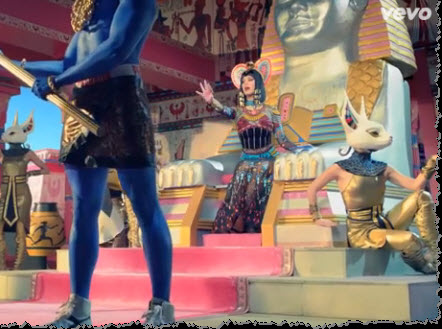
...in which Katy spends most of her time in front of the sphinx's chest, where the star Regulus ("heart star") would be in Leo. Regulus annually unites with the Sun around August 21-23...
|
|
|
|
Réponse |
Message 31 de 33 de ce thème |
|
Mayan Goat Surprise
DSCOVRY, Super Bowl, Mayan/Solar Doom
By Goro
February 13, 2015
[The following is based on Part 9 & Part 13 of my "Super Bowl decoding" series I've been doing on STRUG/Super Torch Ritual Underground.]
Let's get you started...
Now that NASA/NOAA's DSCOVR has been launched into space (by a SpaceX rocket), I'd like to bring your attention to one of this year's Super Bowl commercials... namely the Discover card one ( video). It's not just the name ( Discover/DSCOVR) that draws our attention to it, but also the goat in it. The Sun is in the constellation of Capricorn/Goat from Jan 20 through Feb 16, and the Chinese Year of the Goat will start on February 19th. The " Birthday" surprise seems to allude to the latter (birth = beginning) and hints that we are in for a "surprise" event around that time. We've already discussed how there's a lot going on around that date [...] The timing of DSCOVRY's launch (Feb 11) confirms the pattern: Goat => Baphomet => pentagram => ~February 11... Also telling, the same day DSCOVR was launched, February 11, the captain of the doomed cruise ship Costa Concordia was found guilty for his role in the disaster off the shore of " Goat Island" ( Isola del Giglio). That was in 2012 (January 13-14), resonating with the movie "2012".  
It's not just the ships. The catastrophes in this 2012 story are ultimately caused by... the Sun.
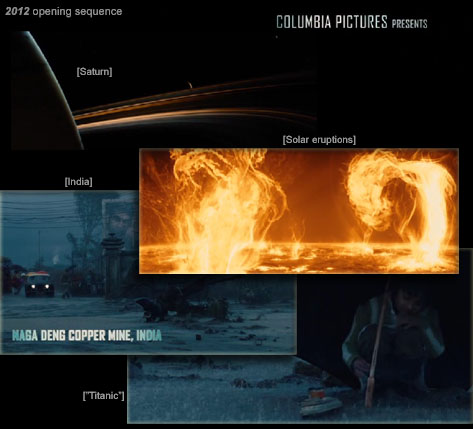
DSCOVR is all about monitoring the Sun (solar wind, coronal mass ejections) for potential danger to Earth!
Not only that, "2012" - the Mayan year - is also identified with undeniable precision in the Discover card commercial with the number "773" displayed on the phone.
If you count back "773" days from and including February 1st, 2015 (Super Bowl day), you'll arrived at December 21, 2012... the "end" date of the Mayan calendar!
12/21/2012 was also the winter solstice, the angle of which is marked by the " Tropic of Capricorn". "Capricorn" is the (horned) Goat.
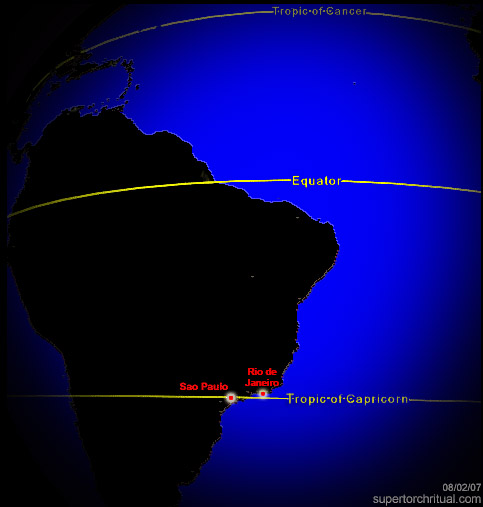
 [Rio de Janeiro in 2012 poster] [Rio de Janeiro in 2012 poster]
The "solar doom" storyline is also something we had found encoded in the DSCOVR launch timing via the late October 2014 X-class solar flares and the movie Knowing.
It's fascinating as well as chilling how many Knowing-related world events we've seen of late, right around the time of the Super Bowl and DSCOVR's launch...
First of all, the New England Patriots won the Super Bowl...
New England includes the states of Maine, Massachusetts, New Hampshire, Vermont, Rhode Island, and Connecticut. But the team itself is based in the Greater Boston Area including Lexington. That's exactly where the story of Knowing is set.
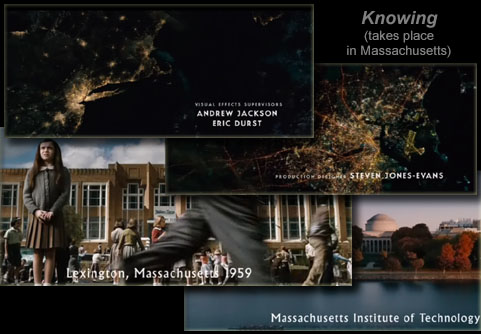
There the story begins with a time capsule... just as in real life a time capsule was discovered and opened in Boston just recently (Dec-Jan 2015).
The 2015 Super Bowl was played in Phoenix (Glendale)...
...a city repeatedly mentioned in Knowing (conceptually what the story is about, i.e. Earth destruction and New Earth).
Even more compelling, not one, not two, but three major world events of February 3rd, 2015 collectively alluded to Knowing.
One...
[Video of the scene]
The train crash in Knowing *also* happened in New York.
Three... (warning: disturbing images)
Katy Perry also wore a fiery outfit during her Super Bowl halftime show.
Quite... disturbing. What the hell is going on?
Well, for one, it tells us very loudly that the pattern we've been tracking is real... scary real. And two, it tells that we are probably still in for some deep impact event, comparable in magnitude to Sumatra/Pope shift. Something potentially momentous is underway, a certain big "surprise" in/for the Year of the Goat. We'll see soon enough...
This is only a small portion of what's happening in this year of... many things.
|
|
|
|
Réponse |
Message 32 de 33 de ce thème |
|
That last brings to mind the Trojan Horse, in the Greek tradition called the "Wooden Horse"...
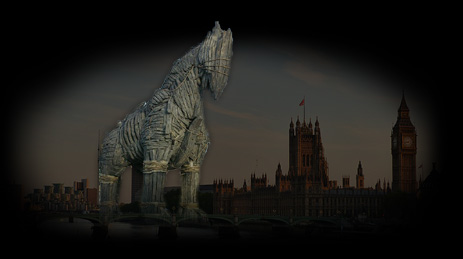
...of the Trojan War, ultimately started by the Golden Apple of Discord.

That's our super theme and we've been tracking it very closely for a few years now, especially this year when Venus has been in its Evening Star phase or Hesperus in Greek from which derives the name of the nymphs " Hesperides" who tend the garden in which golden apples are grown. The Evening Star will attain its maximum brightness in December 2013 (around Dec 8-11). A little later in the same month, there is going to be an Orange Alignment, which is our unique term for a Venus-Sun-Mercury alignment, a very reliable omen/time marker for a certain type of major world events including severe earth changes. In many languages, oranges are called "golden apples". Thus Orange Alignment = Golden Apple Alignment.
It will be a very special alignment this time indeed for various reasons. For one, it will coincide with the winter solstice, exactly one year after the "end" of the Mayan calendar. The winter solstice is also pinpointed by the latitude of two Brazilian cities Rio and (more precisely) Sao Paulo sitting on the Tropic of Capricorn marking the angle of the winter-solstice Sun reflected on the surface of the earth.  |
|
|
|
Réponse |
Message 33 de 33 de ce thème |
|
Pentagram pinpointing Enterprise arriving in the Big Apple...
Pentagram pinpointing Endeavour rolling through LA (and Dragon roaming the sky)...
(Note: My previous article Golden Apple highlighting the Trojan theme was posted hours before the armed conflict erupted. Pattern projection => fulfillment.) "It's all connected"...
SpaceX Marks the Spot (goroadachi.com) |
|
|
 Premier Premier
 Précédent
19 a 33 de 33
Suivant Précédent
19 a 33 de 33
Suivant
 Dernier
Dernier

|
|
| |
|
|
©2025 - Gabitos - Tous droits réservés | |
|
|

